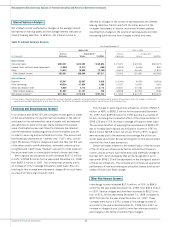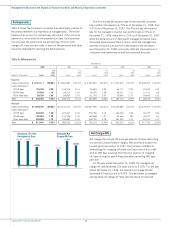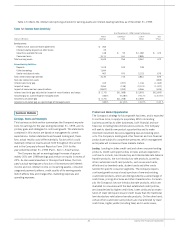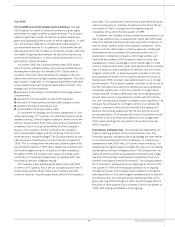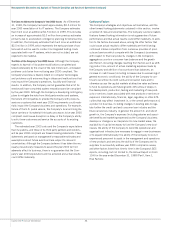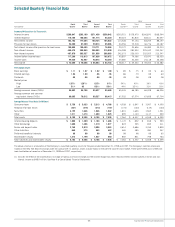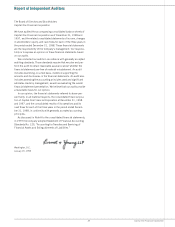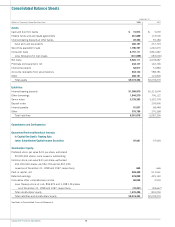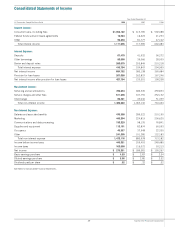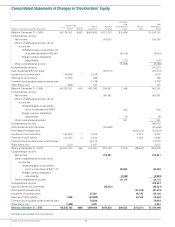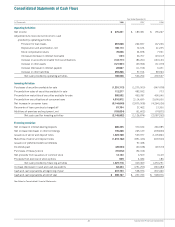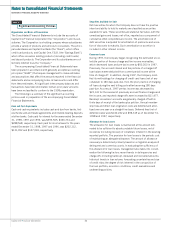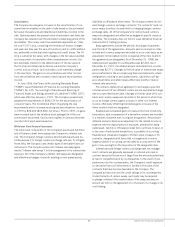Capital One 1998 Annual Report Download - page 36
Download and view the complete annual report
Please find page 36 of the 1998 Capital One annual report below. You can navigate through the pages in the report by either clicking on the pages listed below, or by using the keyword search tool below to find specific information within the annual report.
34Capital One Financial Corporation
Management’s Discussion and Analysis of Financial Condition and Results of Operations (continued)
Cautionary Factors
The Company’s strategies and objectives outlined above, and the
other forward looking statements contained in this section, involve
a number of risks and uncertainties. The Company cautions readers
that any forward looking information is not a guarantee of future
performance and that actual results could differ materially. In addi-
tion to the factors discussed above, among the other factors that
could cause actual results to differ materially are the following:
continued intense competition from numerous providers of prod-
ucts and services which compete with the Company’s businesses;
with respect to financial products, changes in the Company’s
aggregate accounts or consumer loan balances and the growth
rate thereof, including changes resulting from factors such as shift-
ing product mix, amount of actual marketing expenses made by
the Company and attrition of accounts and loan balances; an
increase in credit losses (including increases due to a worsening of
general economic conditions); the ability of the Company to con-
tinue to securitize its credit cards and consumer loans and to
otherwise access the capital markets at attractive rates and terms
to fund its operations and future growth; difficulties or delays in
the development, production, testing and marketing of new prod-
ucts or services; losses associated with new products or services or
expansion internationally; financial, legal, regulatory or other diffi-
culties that may affect investment in, or the overall performance of,
a product or business, including changes in existing laws to regu-
late further the credit card and consumer loan industry and the
financial services industry, in general; the amount of, and rate of
growth in, the Company’s expenses (including salaries and associ-
ate benefits and marketing expenses) as the Company’s business
develops or changes or as it expands into new market areas; the
availability of capital necessary to fund the Company’s new busi-
nesses; the ability of the Company to build the operational and
organizational infrastructure necessary to engage in new businesses
or to expand internationally; the ability of the Company to recruit
experienced personnel to assist in the management and operations
of new products and services; the ability of the Company and its
suppliers to successfully address year 2000 compliance issues;
and other factors listed from time to time in the Company’s SEC
reports, including, but not limited to, the Annual Report on Form
10-K for the year ended December 31, 1998 (Part I, Item 1,
Risk Factors).
The Costs to Address the Company’s Year 2000 Issues As of December
31, 1998, the Company had spent approximately $5.5 million for
year 2000 remediation of its IT systems. The Company estimates
that it will incur an additional $1.5 million in 1999. This includes
an increase of approximately $1.0 million from previous estimates
primarily due to accelerated contingency planning for America One.
In addition, the Company estimates that it will incur an additional
$2.0 million in 1999, which represents the early purchase of sys-
tems which will be used to conduct its integrated testing. Costs
associated with non-IT systems, which are not included, are not
expected to be material.
The Risks of the Company’s Year 2000 Issues Although the Company
expects to have all of its system modifications completed and
tested extensively by the onset of the new millennium, unforeseen
problems could arise from not being year 2000 compliant. The
Company’s business is heavily reliant on computer technologies
and problems could arise resulting in delays and malfunctions that
may impact the Company's operations, liquidity and financial
results. In addition, the Company cannot guarantee that all of its
vendors will have completed system renovations and be compliant
by the year 2000. Although the Company is developing contingency
plans to mitigate the risks from third party vendors and systems,
the failure of third parties to provide the Company with products,
services or systems that meet year 2000 requirements could mate-
rially impact the Company's business and operations. For example,
failure of the U.S. postal service, the Company's local and long dis-
tance carriers or its material third party processors to be year 2000
compliant could cause disruption or delay in the Company's ability
to solicit new customers and service the accounts of its existing
customers.
The estimated year 2000 costs and the Company's expectations
that its systems, and those of its third party partners and vendors,
will be year 2000 compliant are forward looking statements. These
statements are based on management's reasonable estimates and
assumptions about future events and are subject to risks and
uncertainties. Although the Company believes it has taken the nec-
essary precautionary measures to assure the year 2000 will not
adversely affect its business, there is no guarantee that the Com-
pany's year 2000 expectations will be achieved and actual results
could differ materially.


